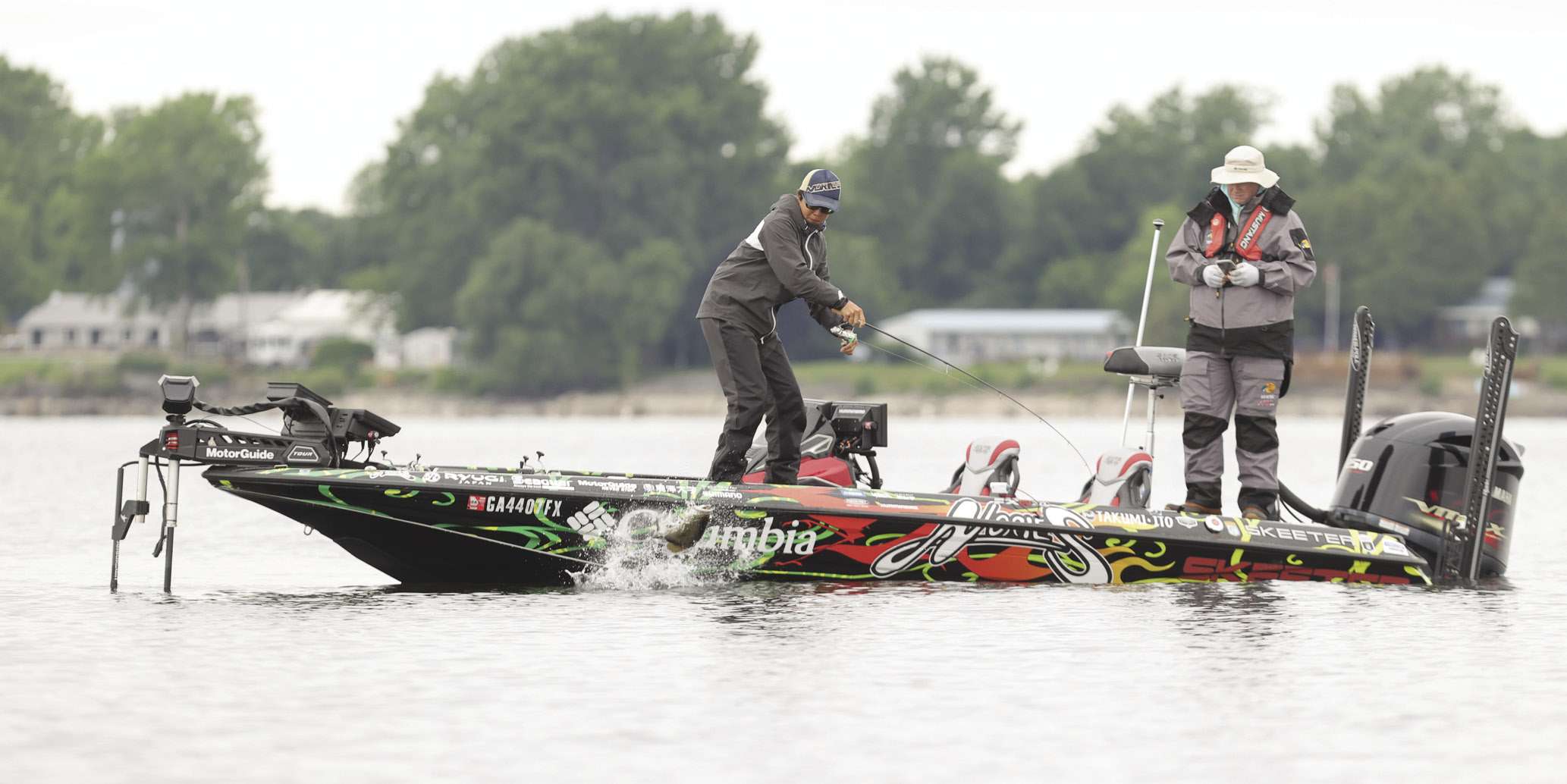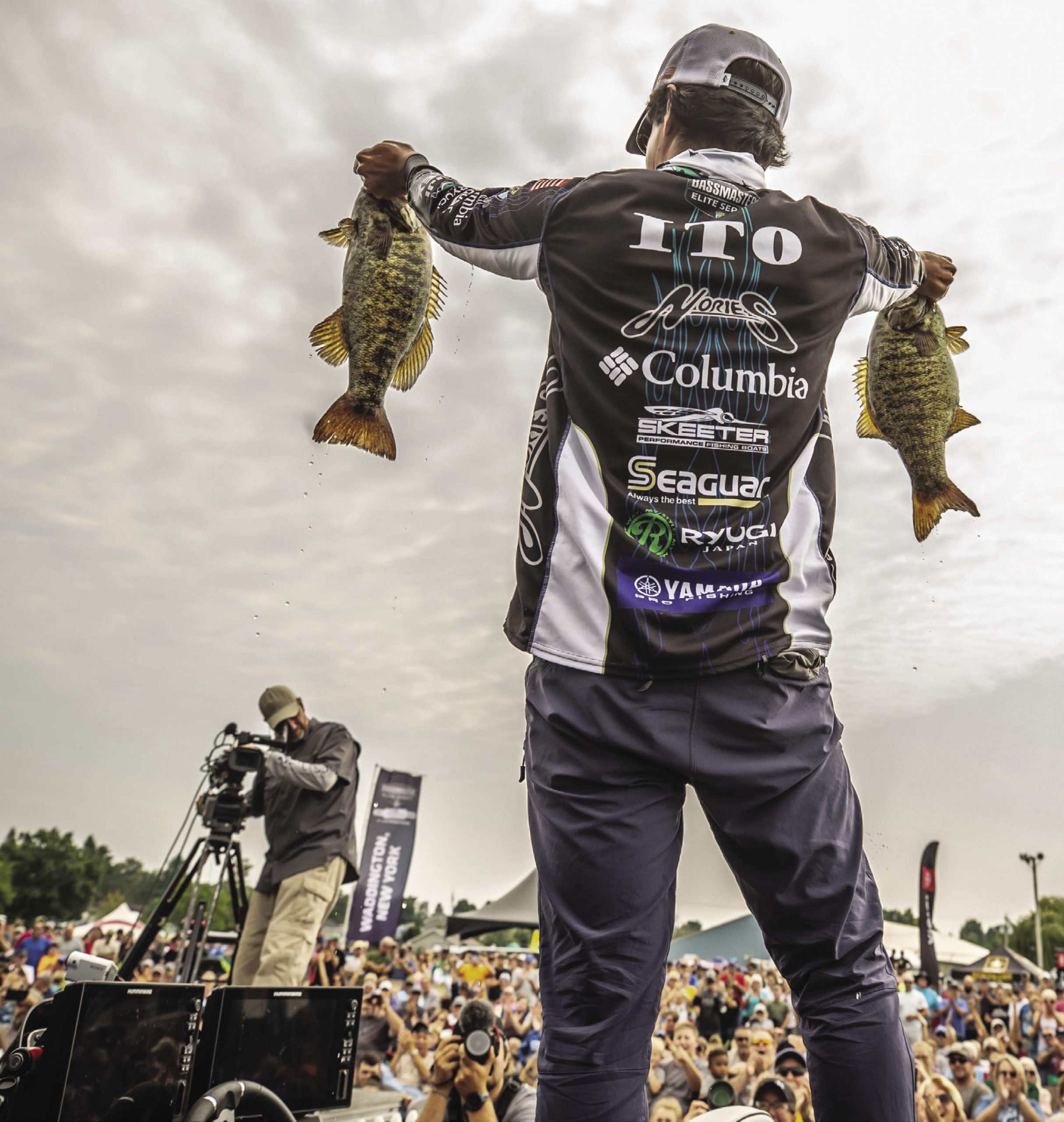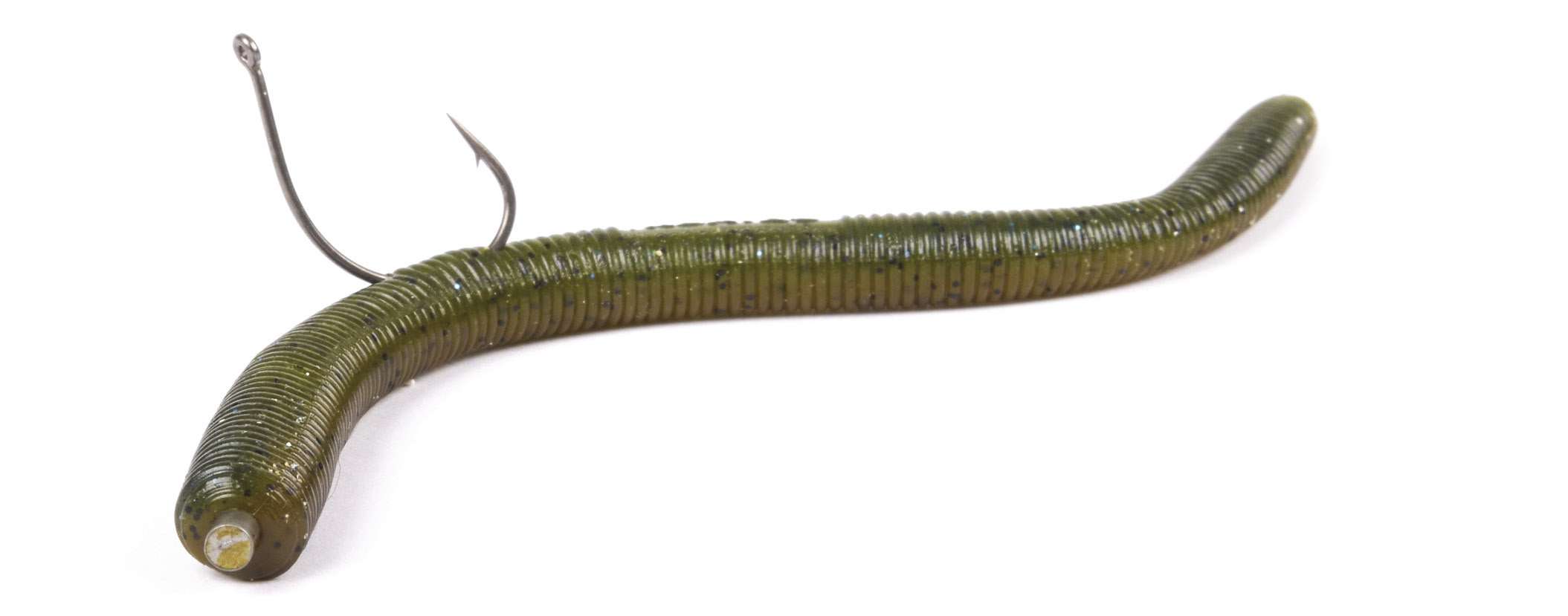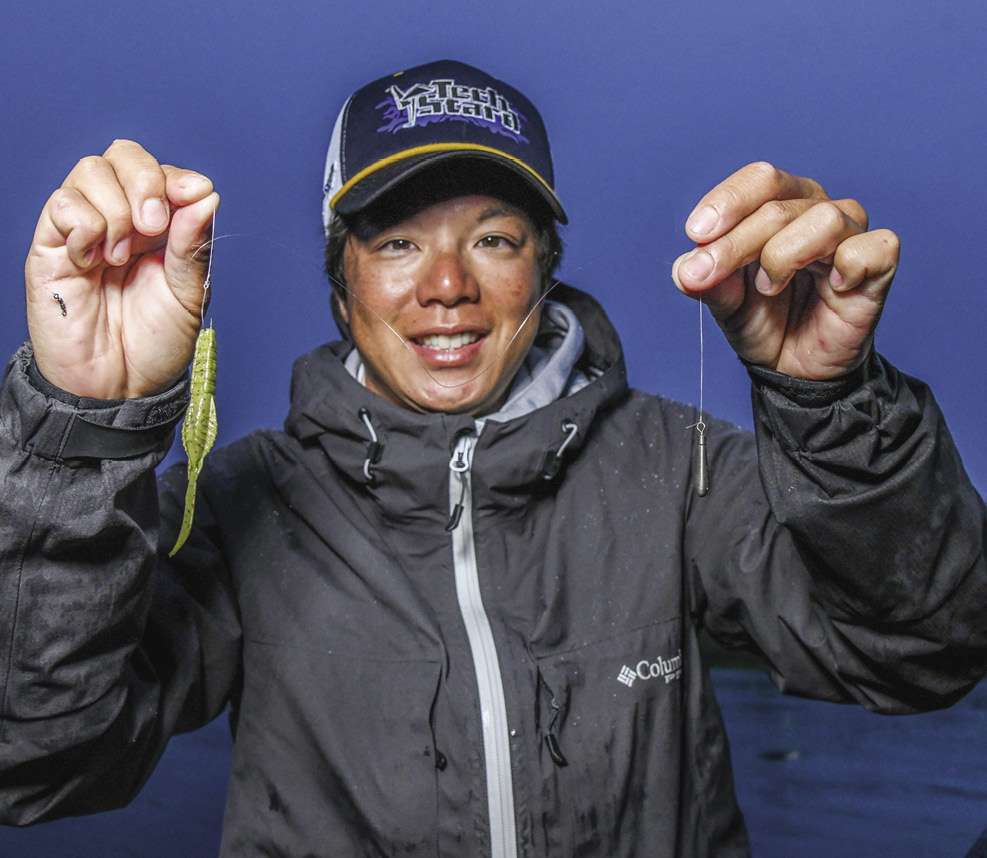
Did Dr. Dolittle actually talk to the animals, as in speak their specific language? Or, did he simply understand how to interpret signs, gestures and responses? Debatable, but the same line of thinking seems relevant to Takumi Ito’s impressively rapid mastery of smallmouth bass fishing — and his intriguing claims of communicative ability.
Quick refresher: Qualifying for the Bassmaster Elite Series through the 2019 Basspro.com Bassmaster Central Opens, where he notched three Top 10s, including a second at Toledo Bend, Ito entered his rookie season with zero smallmouth bass experience. At 2020’s conclusion, the standout from Chiba, Japan, owned a trio of Elite Top 10s — all on smallmouth fisheries: St. Clair (10th), Lake Champlain (10th) and the St. Lawrence River (sixth).
Flash forward to July 2021, and Ito closed his sophomore year by winning the final Elite event on the St. Lawrence. Understandably, some pondered, “How did this happen?”
No slight to Ito — he won fair and square. But, facing a final field stacked with accomplished smallmouth sticks like the ever-lethal Johnstons (Cory and his brother Chris, who won the 2020 St. Lawrence event), 2020 Angler of the Year/Lake Ontario master Clark Wendlandt and Alabama smallmouth stud Justin Atkins, Ito entered Championship Sunday in seventh place with a tall order ahead of him.
Sacking up 26 pounds of final-round glory, this relative smallmouth neophyte absolutely laid the smackdown on a bunch of guys with astronomically greater smallmouth experience. The best part: Ito’s explanation had the Waddington, N.Y., crowd fawning over the irresistible charm radiating through his admittedly broken English.
“Smallmouth can speak the Japanese language; I can speak the Japanese language, so I can speak smallmouth.”
Take that with as many grains of salt as you see fit, but the guy threw some serious weight on the scale. Leading up to his big, final-round effort, Ito caught limits of 17-15, 22-14 and 23-3. Winning with a four-day total of 90 pounds, he earned Big Bass honors for Days 3 and 4 with twin 6-pounders.
Bolstering his premise with an instantly relatable dose of pure Americana, Ito referred to his Lake Ontario honey hole as “Taku Disneyland” (another crowd-pleaser). Located outside Chaumont Bay, south of Cape Vincent, where river meets lake, Ito’s winning spot comprised standard smallmouth-friendly rock structure in 26 to 27 feet.
After a solid Day 3, Ito arrived on Day 4 to find a massive school of jumbo smallmouth had invaded his spot. With the fish suspending so tightly that they resembled a false bottom, Ito found himself in a Lake Ontario turkey shoot — one that, according to him, allowed for a rather exclusive tone.
“I could catch only 5-pounders,” Ito claimed. “I talked to 3-pound smallmouth and I said, ‘You shouldn’t eat my bait.’ And then I talked to 5-pounders and I said, ‘Let’s eat my bait!’
“I said 3-pounders cannot eat. ‘You cannot eat, you cannot eat. Five-pounder can eat! Five-pounder, bite! Five-pounder, bite! That’s all.’”
(Imagine a weigh-in crowd absolutely giddy with laughter and then dial it up about five notches. Put it this way: “Taku Time” is the new Beatlemania.)


Formative years
Clever stuff, but Ito recently allowed a tour of his wheelhouse and, believe what you want, but it sounds like there’s definitely some level of Dolittle-ing going on in there. As Ito explained, cutting his teeth on stingy Japanese waters gave him a jump on the smallmouth education.
“Sometimes, I did boat fishing with my father at the Tone River, but I couldn’t fish there often, so I mainly did bank fishing at small ponds or lakes,” Ito said. “There are many bank fishermen in Japan, therefore very high pressure.
“It’s tough, and it’s so hard to catch a fish, but this experience is useful for me to catch many bass in the U.S.”
Pointing to wakasagi and ayu as common baitfish in his home waters, Ito made an interesting observation that bespeaks a confidence in his persuasive skills: “U.S smallmouth eat bait when they are not hungry; it’s very similar to Japanese largemouth.”
Asian delicacies
Ito has done an admirable job of familiarizing himself with American-style baits and tactics, but he traces a huge piece of his U.S. success to his ability to integrate Japanese baits and strategies. Suffice it to say, his arsenal — now well-documented in tournament reports and photo galleries on Bassmaster.com — has created quite a buzz.
On the St. Lawrence, Ito did most of his work with a drop shot with a 4-inch Ecogear Aqua Swim Shrimp rigged on a 1/0 Ryugi Talisman hook with a 1/4-ounce Ryugi TG Delta sinker. (This rig also delivered on Champlain and St. Clair). He also Neko-rigged a 5 1/4-inch Nories Latterie straight worm with a 3/16-ounce Neko weight and a 1/0 Ryugi Talisman hook.
“Ecogear Aqua is very good for smallmouth. It’s very special material and it’s top secret, so I can’t tell you, but it’s [also] very good for saltwater fish,” Ito said. “The special material is very tasty; it’s just like a Japanese sushi. Smallmouth are gourmet, so they like the taste and smells of Japanese baits.
“Nobody used my worm! Ecogear Aqua is a very smelly and tasty worm, so truly, if you will use this worm, you can catch smallmouth easily.”
During his St. Lawrence win, Ito did catch a few fish on a Berkley PowerBait MaxScent Hit Worm — and 2020 saw him effectively employing other mainstream smallmouth charmers. However, since the smallmouth couldn’t visit Japan, he figured he’d deliver a taste of home.
“Smallmouth are the same as humans — people in the U.S. like steak or very oily fries, but sometimes you guys want to eat Japanese foods like sushi,” Ito said. “So it’s the same for smallmouth. One day, they want to eat U.S. baits, but another day, they want to eat Japanese baits.”
Day 3 at the St. Lawrence was one of those days. Minimal wind and calm water made for a tough bite. That’s when Ito’s Japanese baits truly began to shine — largely because he listened to what the fish were telling him.
“This was so tough to catch a fish,” Ito said. “I threw U.S. baits [oily baits] for many smallmouth groups but they didn’t eat it. The smallmouth said that they want to eat no oily food — LOL!”
Now, with any cuisine, you can’t forget the condiments, and Ito chose to soak his plastics in Nories BiteBass Liquid. The Nories website offers fish and shrimp formulas, with the latter’s label including an image of the tenaga-ebi (“long-armed shrimp,” aka giant freshwater prawn), native to rivers and streams on Honshu and northern Kyushu.
Ito said this crustacean ketchup was a game-changer.
“BiteBass Liquid is [a freshwater formula] that smells like Japanese shrimp, and I think U.S. smallmouth like this smell,” he said. “I don’t know why smallmouth like this smell, because the [giant river prawns] are not in the U.S.”


Time invested
Intuition has clearly played a role in Ito’s smallmouth success, but so has good, old-fashioned work ethic. Realizing he’d be facing an uphill battle when the 2020 Elite season headed North, he burned a lot of daylight and a lot of gas striving to learn as much as he could before derby day.
“I didn’t have any off days in the U.S. — I have always done prepractice,” Ito said of his nonstop field study. “Last year, due to [the pandemic], many tournaments were postponed and I could take many [days for] prepractice. Especially, I took many days for Northern fishing.”
While Ito found that the Elite Series’ no-information rule steepened his learning curve, this may very well have been the catalyst for his success. When in Rome, right? Well, if no one can tell you what the Romans do, you do it your way.
“I didn’t know the useful lures for smallmouth at that time; therefore, I tried many Japanese baits at Northern prepractice,” Ito said. “I also tried almost all baits which U.S. anglers have used for smallmouth, [including] tube worms, Ned rig and Jackall Cross Tail Shad. I couldn’t talk with shop staffs due to no information rules, [so] I checked the displays in the shops and tried [to determine what to use].”
Tackle and tactics
Ito’s tackle pretty much mirrors what we traditionally expect for smallmouth finesse work. For his St. Lawrence win, he armed himself with a 6-10 medium-light Nories Road Runner Structure NXS rod and a Shimano Stella 2500 SHG reel with 11-pound Seaguar Smackdown braid (flash green) and 8-pound Seaguar Gold Label fluorocarbon leader.
If he had an edge, it was more of a presentation thing. Ito had demonstrated admirable patience before — like his superslow finessing of lethargic Sabine River largemouth, which yielded a third-place finish — so it came as no surprise that his
St. Lawrence game plan included glacial presentations, often deadsticking his drop shot right on the bottom.
“I was using many Japanese techniques,” Ito said. “I would cast and sometimes the fish would take [the bait] while it was falling. Sometimes, I kept my bait on the bottom for 10 seconds, 15 seconds, with no action.
“Almost all people cast, [let their bait fall to the bottom] and shake. The bait is way up — no good. I want my bait on the bottom.”
So, you could say Ito wanted his bait to “do little.” (Last one, I promise.)
A long 15-foot leader also facilitated a stealthy presentation that seemed to do the trick on Lake Ontario. Essentially, he often needed to pendulum his bait through the suspended smallmouth without immediately spooking them with braided main line.
“When I cast, I kept my bail open to [pay out] more line,” Ito said. “Braided line cuts through the water, and sometimes [this makes] suspended fish nervous.”
Did the fish “tell” him this? Well, you can frame it however you like, but Ito’s resume clearly reflects a lot of smallmouth know-how for a guy who’s only been at it for two years.





